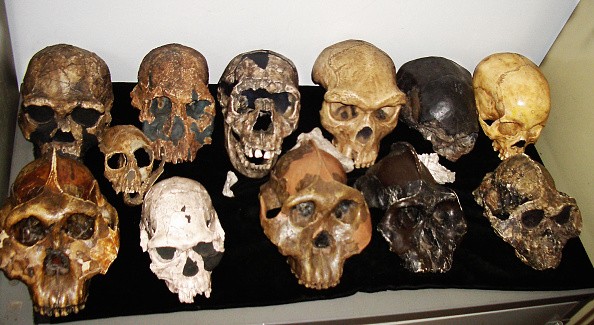Since the discovery of the remains called Omo I in Ethiopia in the late 1960s, scientists have been analyzing chemical fingerprints of volcanic ash layers discovered above and below the sediments in which the fossilized remains were located to date the Omo I remains correctly.

Oldest Modern Human Fossil in Eastern Africa
The age of the Omo I remains has been reviewed by an international team of experts, led by the University of Cambridge.
Earlier attempts to date the fossils revealed they were less than 200,000 years old, but the current analysis suggests they must be older than a major volcanic explosion that took place 230,000 years ago, according to Phys.org. The study's findings were published in Nature.
The date of the oldest fossils in eastern Africa universally regarded as representing the human species, Homo sapiens, has long been disputed. According to the latest findings from Ethiopia's most recent big volcanic eruption, the new study shows they are older than scientists initially thought.
Within the Omo Kibish Formation, southwest Ethiopia's Omo I remains were discovered in the East African Rift valley. The area is a hotbed of volcanic activity and a treasure trove of prehistoric relics, such as stone tools, that date back thousands of years.
Human species, Homo sapiens, was first discovered in Omo I by dating volcanic ash layers found above and below archaeological and fossil sites.
There has previously been a great deal of uncertainty about the Omo fossil's age, which is now widely accepted to be less than 200,000 years old, according to lead author Dr. Céline Vidal from Cambridge's Department of Geography. No one had been able to date the ash, which is too finely ground to utilize radiometric methods, until the fossils were discovered beneath it.
Also Read : 5 Most Important Fossil Discoveries in the World
Science-driven Approach for Dating Human Fossil
All major volcanic eruptions in the Ethiopian Rift around the time of the development of Homo sapiens, which is referred to as "the late Middle Pleistocene," are being studied by Vidal and her colleagues in a four-year research led by Clive Oppenheimer.
Pumice rock samples collected from volcanic deposits were ground to sub-millimeter size by researchers. Because of the journey the lava took to reach the surface, each eruption has its own fingerprint-a story of its own evolution.
Once the rocks are broken down, scientists will be able to date and identify the chemical signature of the volcanic glass that keeps the minerals together.
It was determined that an eruption of Shala volcano, which is located more than 400 kilometers away, was responsible for the thick volcanic ash layer found at the Kamoya Hominin Site (KHS ash).
The volcano's pumice samples were then dated to 230,000 years ago by the researchers. In order to be more than 230,000 years old, the Omo I fossils have to have been unearthed in a strata deeper than this.

Ages of the Oldest Homo sapiens
Co-author and co-leader of the field inquiry Professor Asfawossen Asrat from Addis Ababa University in Ethiopia said: "The Omo Kibish Formation is an extensive sedimentary deposit which has been barely accessed and investigated in the past."
"Our closer look into the stratigraphy of the Omo Kibish Formation, particularly the ash layers, allowed us to push the age of the oldest Homo sapiens in the region to at least 230,000 years."
However, further discoveries and studies may stretch human species' age even further back in time, according to the researchers of this latest study on Homo sapiens in eastern Africa.
For more news, updates about fossils and similar topics don't forget to follow Nature World News!
© 2026 NatureWorldNews.com All rights reserved. Do not reproduce without permission.





